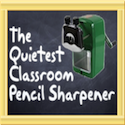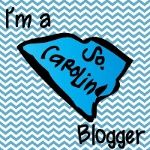Informational
This unit begins by me letting students write down their top 3 animals they'd like to learn more about. I just give them a post-it and have them jot these down with their names. I have them research about animals for several reasons: 1) it meets two standards at once (science and language arts), 2) there are TONS of animal books to be found, and 3) if they're all researching animals, we can all use the same format and I can model this during mini-lessons. I then sort through the post-its and make sure everyone has a book to read on one of his/her animal choices. I locate the books from our classroom library or the school library.
I begin mini-lessons by telling the students that I want to learn more about SHARKS {no real reason I choose this other than I know it will be interesting for the students and I have a lot of shark books in my classroom.} I have them write down one question they want to find the answers to about sharks. I take these questions (on post-its) and create an affinity diagram with them. The affinity always ends up with the same large groups {funny, how that works out huh? Always the same groups that I wanted them to have ;)} - What do they look like? Where do they live? What do they eat? Who are their enemies? How do they protect themselves? What are other interesting facts about sharks? These are the questions we use to drive our reading. I use a lotus diagram booklet for students to take notes in as they read. The front (see below) has these questions with their topic in the center. Each of these questions will end up being a chapter in the book they create about their topic. Then, each question has a page of its own for students to use when taking notes (see below).
Each day, I hold mini-lessons (using the topic of sharks and informational shark books) to model how to research and locate information using the text features. Students go back and apply these strategies with their own books, taking notes and learning about their animals. We also play a LOT of games throughout this unit to practice with the text features. A couple of my favorites include:
1. Triple Text Feature Match Up (I have them cut up these cards, place in ziploc bags and take home to play for extra practice!)
2. Around the World with Text Features (We place this one EVERY day...they love it and it really gets them familiar with these features!! I use the "Nonfiction Text Feature Cards" from Teacher's Clubhouse for this game.)
I also post these Non-Fiction Text Features Signs in my classroom and let students refer to them as often as possible. (The set of 9 Non-Fiction Text Feature Signs is $0.99 from Teacher's Clubhouse.)
Throughout the unit, students are reading, taking notes, and we're practicing those text features a lot! Once they've collected all of the information from their book, they can use other sources - sometimes they'll find other books and we'll also use the computer. If you're in South Carolina, Discus is a wonderful resource. The students can search by animal groups to find their animal and the computer can even read words or paragraphs to the student, if needed! (You have to get the password form your media specialist or your local library branch).
When all research is complete, students begin creating their very own Informational Book on their topic to share with the class. These books will be chapter books and include ALL of the text features we've learned about - table of contents, realistic drawings, captions, special type, pronunciations, index, glossary!
Yes, I also introduce a simple "Works Cited" page during this unit. I think it's important for even 2nd graders to know that they have to give the author credit for the information. We do a little role play to help them understand this where I take an awesome piece of writing from the hall, read it, and give credit to the wrong student. I'm very adamant how that student did the work and praise them. The rightful owner, of course, gets pretty upset and demands credit. Then we talk about how that made them feel...they really do understand and remember it!
Oh, yeah! We also create our first PowerPoints during this unit! I create a super simple template for students to use and teach them to insert clipart, change fonts, change background colors, and add slide transitions. They soak this up VERY quickly, and beg for more all throughout the year!
For our C*E*L*E*B*R*A*T*I*O*N, we invite parents in and share our PowerPoints in a group setting, then students read their books to their guests! And, if we've previously learned about measurement, we'll even create life-size replicas of our animals to create a museum for our guests to tour! (That hasn't worked out the last couple of years, so I don't have pictures but I am missing it!! {Goal for this year!}
After our Informational Genre, we keep rolling with our non-fiction studies and jump into Biographies!
Biographies
This unit begins with me asking "What makes a person famous?" They always come up with great ideas, and, again, we make an affinity diagram - special talents, helping others, inventions, etc. Before I let the students make their 3 choices, we talk about "famous for now" vs. "famous forever" - they really understand that while, they may love Lady Gaga at the moment, she may not be "famous forever." We really want to focus on people who have made a great impact in America somehow. Once students have been assigned their famous American, we begin the research process in much the same way. During this unit, students are also creating Famous American File Folders that include a portrait of the person (with a symbol that gives a clue to their achievement in the background), a timeline of their life, a poem (based on The Important Book), and their report. I have them write their final reports in first person, as they will actually BECOME their famous person for our celebration! They also type these in Microsoft Word (using a simple template I create with the font size and spacing I want).
Some years, we create Famous American trading cards and comic strips (to practice dialogue).
Our C*E*L*E*B*R*A*T*I*O*N for this unit is probably the most popular and talked about celebration of the year - our LIVING MUSEUM. This is where students come to school dressed as their famous person and stand as a statue. They wear red buttons that say "PRESS" on them, and when a visitor presses their button, students come to life and read their report. We invite everyone - parents, administration, and the "big kids" (other classes...even 5th grade!) It really is quite an event to watch and the students do an incredible job with their reading and knowledge!
So, that's it...that's non-fiction in our classroom. What are your favorite non-fiction activities? Tomorrow, I'll post about Poetry and Folktales! All of my resources for my reading units can be found at http://www.teachersclubhouse.com/genrestudies.htm.
Don't forget to join my 100 Follower Giveaway, if you haven't already! It ends on Saturday!!

































My students always love when we read nonfiction. 2nd graders love learning about animals so I usually do a Gail Gibbons author study at the same time. ( I got that idea from you.)
ReplyDeleteThis past year I wanted to add autobiographies, but never got around to it. This year I plan to start that writing as a homework assignment. Then I will have to find the time to work that into writing.
http://secondgradelockerroom.blogspot.com
Yes, I love reading Gail Gibbons as my author focus during this unit!! It's great for them to see that some nonfiction books have realistic drawings rather than photos. ;) I love the idea about Autobiographies...I've considered that in the past, but never had time to fit it in. Using it as a take-home activity is brilliant! {adding to must do list}
ReplyDeleteGreat post! Makes me want to do animal research projects with my kiddos and incorporate going to the library to find books...something I don't really do with my students as a special ed teacher. Thanks for making it look so do-able!
ReplyDeleteWe are ALL Special!
Yes! Your special ed kiddos could do it, and they would LOVE it! :)
ReplyDeleteI LOVE, love nf. I do expert posters with my 2nd graders using Gibbons books of their choice. This was the 2nd year I'd done them and they are amazing! I have them create posters with at least 4 different text features. We use your posters as guides and display them in the hallway. The older kids are always reading them while waiting for the morning bell! Maybe they'll learn something!
ReplyDeleteLove, love, love your blog design--and the play on words with your name! Super cute!!
ReplyDelete2 Crazy Texas Teachers
Thanks, Texas Teachers! Rachel, LOVE the idea of expert posters with the text features! Students would have so much fun creating those! :)
ReplyDeleteThis comment has been removed by the author.
ReplyDeleteSo glad to have stumbled upon your blog. Now, that it is summer time I can look around.
ReplyDeleteStop by my blog sometime, too.
:) Tamera
My Heart Belongs in First
I love how your students make their own informational books that include the text features they just learned about! Right now, my text feature unit and animal research unit are separate, but I would love to combine them! Thanks for sharing! Also, I see you mention your Celebrations a lot. Do you have a blog post that tells more about them somewhere? I would love to hear more!
ReplyDeleteKate
EduKate and Inspire
Hi Kate, I don't have a blog post specifically about my celebrations yet. I'll be sure to take lots of pics of them and blog about them this year! :)
ReplyDeleteWhat fantastic ideas!! I've nominated you for a Versatile Blogger Award! Stop by my blog to pick it up!
ReplyDeleteJessica
Mrs. Heeren's Happenings